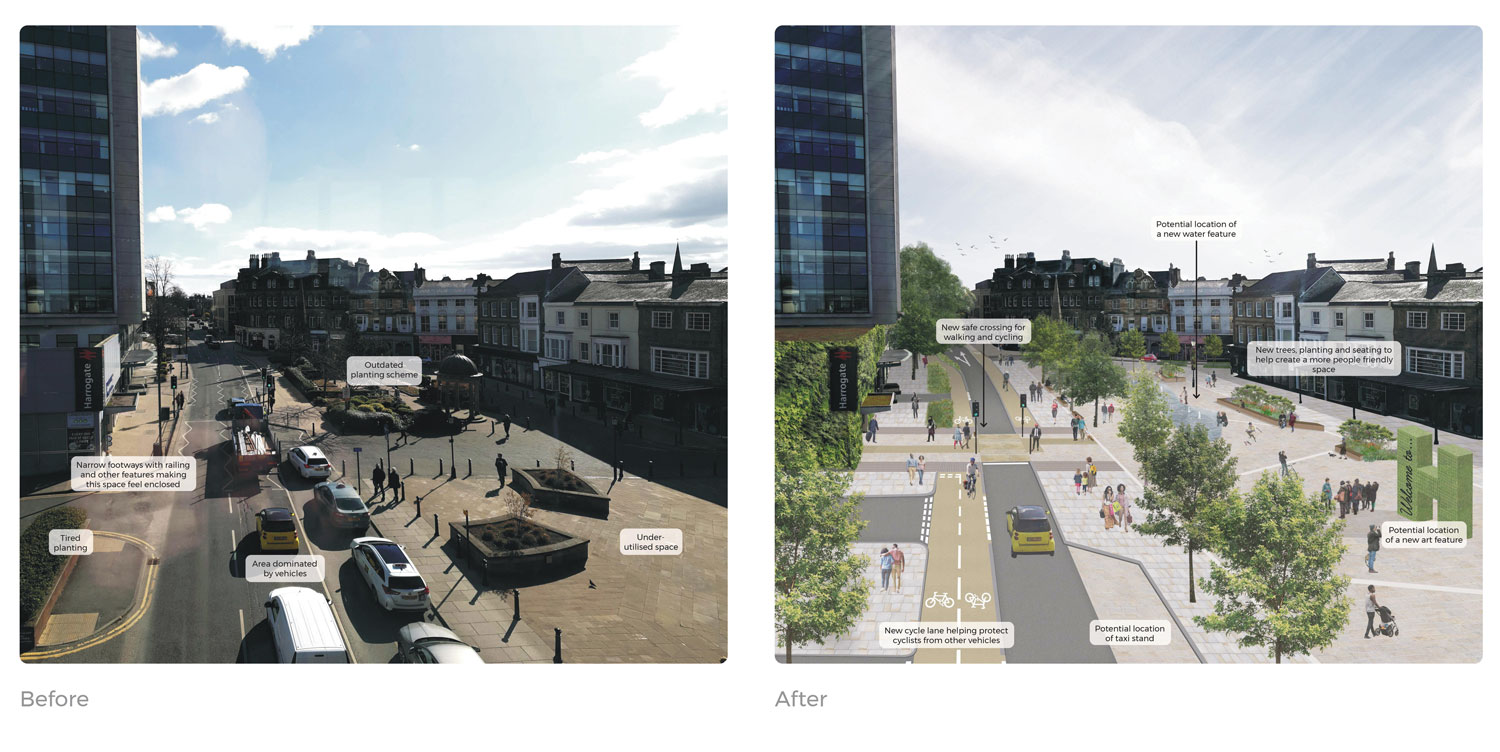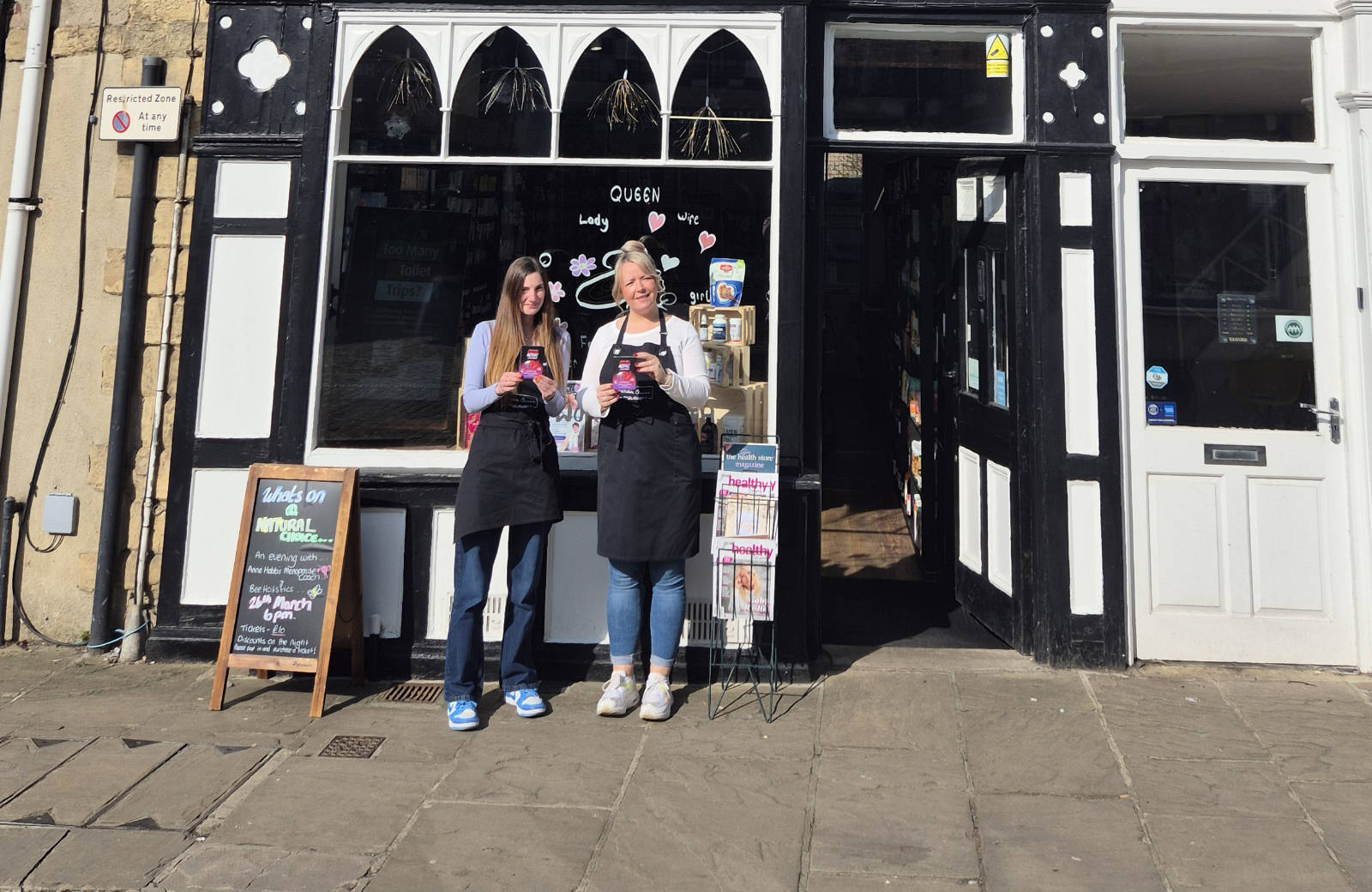Letter from Iain Patton, Managing Director of Ethical Team – Purpose-Driven PR Experts
Making pedestrians and cyclists a priority rather than cars makes communities safer and healthier. Harrogate Council and the new North Yorkshire authority are doing the right thing by evolving the town centre layout and infrastructure to facilitate a greener future. There is plenty of business and scientific evidence to demonstrate why we should encourage more people to walk and reduce the use of cars in urban areas. People objecting to the plans being implemented need to move with the times by using public transport, adopting car sharing, parking on the perimeter and recognising that central government is moving towards a net-zero economy whether or not they like it. In fact, North Yorkshire County Council declared a climate emergency in 2022. Maybe Harrogate should adopt a Park and Ride system like Bath to ease traffic and congestion so car users are catered for.
In dense city centres, where space is rare and expensive, using two tonnes of metal to move an average 70kg human body makes no sense. The benefits of more pedestrianisation and building more cycle paths are clear: a dramatic reduction in pollution and congestion and a positive uptick in public health, happiness and efficiency. For example, the cycling superhighway along The Embankment in London could carry five times more people at total capacity than if they were travelling by car. The same is valid for parking: one parking spot for a vehicle can store 12 bikes.
Switching to car-free town and city centres would be the most efficient way to revive dying high streets. A recent study published by Transport for London, and conducted by Matthew Carmona from University College London’s Bartlett School of Planning, showed that people who walked, cycled or used public transport spent 40 per cent more in their local shops than car drivers. Moreover, streets prioritising pedestrians and cyclists tend to have significantly lower vacancy rates.
Pedestrianising city centres and increasing cycling paths are essential for several reasons:
Sustainable transportation: Promoting walking and cycling reduces reliance on cars and encourages using more sustainable modes of transportation. This helps to decrease carbon emissions and air pollution, contributing to a cleaner and healthier environment.
Health benefits: Encouraging active modes of transportation like walking and cycling promotes physical activity, improving public health. Regular exercise helps reduce the risk of obesity, heart disease, and other chronic illnesses.
Safety: Pedestrianizing city centres and creating dedicated cycling paths provide safer spaces for pedestrians and cyclists, separate from vehicular traffic. This reduces the risk of accidents and improves overall road safety.
Enhancing the urban environment: Car-free city centres create more vibrant and attractive public spaces, encouraging social interaction and community engagement. Pedestrian-friendly environments also benefit local businesses by attracting more foot traffic and customers.
Reducing congestion: By promoting alternative modes of transportation, such as walking and cycling, cities can reduce traffic congestion and improve the flow of people and goods. This leads to more efficient transportation systems and better overall mobility.
Economic benefits: Pedestrianizing city centres and improving cycling infrastructure can boost local economies. Studies have shown that walkable and bike-friendly areas attract more visitors, increase tourism, stimulate retail activity, and support local businesses.
In summary, pedestrianising city centres and increasing cycling paths contribute to a greener, healthier, safer, and more vibrant urban environment, benefiting individuals and communities. However, this requires a shift from the car lobby, which seems entrenched in the past with their combustion engine mentality causing pollution and congestion. Harrogate like many towns national needs a rethink and to be repositioned as a spa destination known for health and well-being. Finally, the high street is dying not because of limited access by cars but because of a change in shopping habits and consumers buying online. If car owners address these issues and stop focusing on self-interest, we can enjoy a healthier, safer, greener future in Harrogate.








It’s alright to promote cycling and walking but if you are elderly and have mobility difficulties cycling is out and the bus service is practically non existent! I haven’t hardly seen anybody use the new cycle path on Otley Road.
The only way to make Harrogate cleaner is to build a bypass. This project will not work until you divert traffic away from the town. Build a bloody bypass.
Bollocks
As it stands now, it still works. There isn’t enough cyclists that warrants that change. Single car lane will only congestion driving through the town. Let’s concentrate on diverting cars away from the town. A bypass however small will help massively. Let’s concentrate on helping shop owners from closing which is increasing every week, after all Harrogate is a tourist attraction. I get what you are saying but, concentrate on the already deteriorating infrastructure in and around the town. If you put this to vote to the Harrogate residents would have a pretty negative response I think. There are many other areas to improve so let the people speak. London is a city and Harrogate is a town, studies doesn’t necessarily work for everyone.
A lot of elderly people or people with mobility issues are able to cycle. Modern electric bikes and trikes are almost miraculous in their usability and ability to transform lives.
However, while our roads are totally dominated by increasingly bigger cars, often driven with little apparent regard for other more vulnerable road users, who can blame our less agile neighbours for not risking it.
Yay! Sick of ‘car is king’ mentality here. We need radical ideas and implementation.
A bypass works. Look at Ripon, Skipton, Selby and Malton.